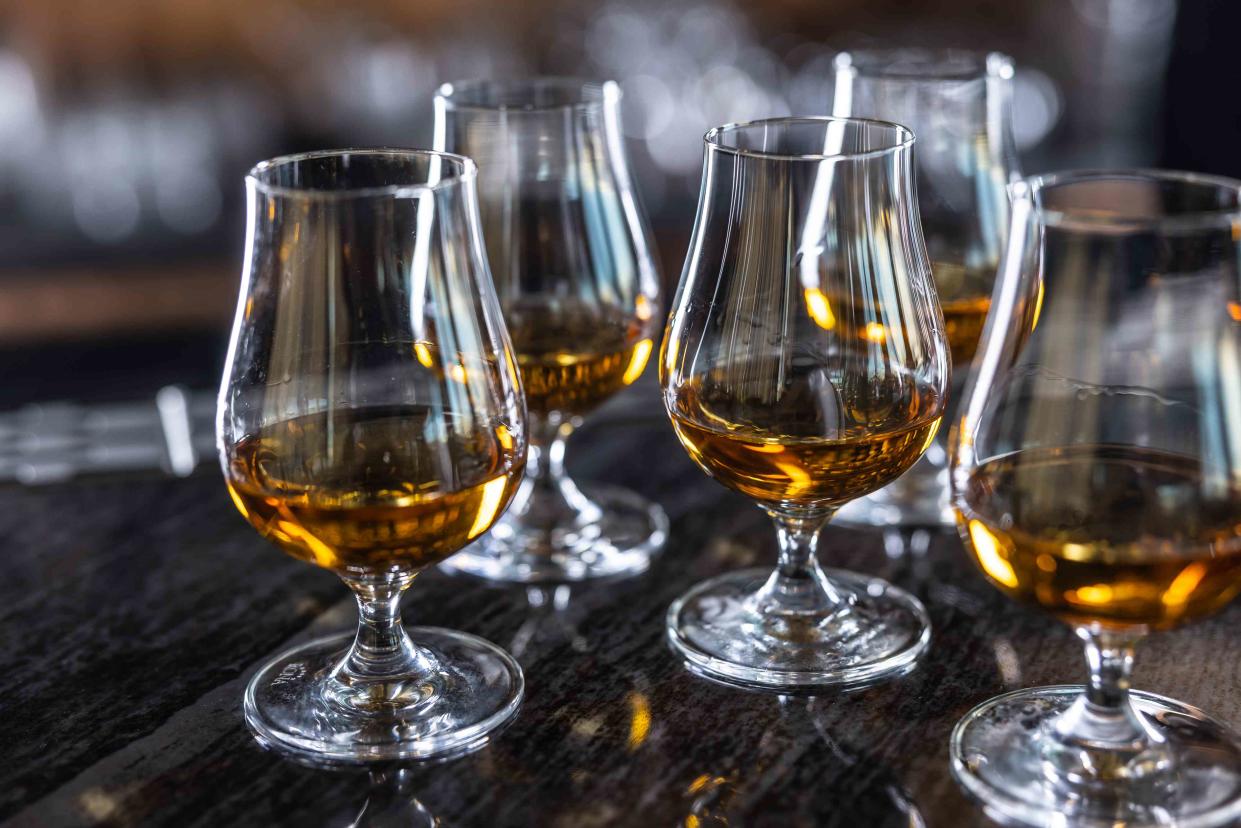Not All Scotch Whiskies Are Smoky — Here's Why
Learn about what goes into making your prized bottle of Islay Scotch whisky.

SimpleImages / Getty Images
One of the most commonly held misconceptions about Scotch whisky is that all of them are smoky. That’s far from the case: Scotland is home to whiskies that are crafted in a wide range of styles, from ones that are generous with fruit to others that are almost saline in their savoriness. And, of course, there are smoky ones, but plenty of other countries produce them, too. Still, since Scotland is home to the most famous examples, it only makes sense that our exploration of smoke in whisky or whiskey focuses on that country.
Whether or not they boast smoke, all single-malt Scotch whiskies start similarly: With malted barley. Malting is the process of germinating the barley, which is crucial for the yeast to access adequate sugars for fermentation. Moisture or water is required for germination to occur, so distilleries have to dry out their barley using heat. For a long time, explains DIAGEO national luxury ambassador Ewan Morgan, “Peat, also known as turf, was the primary fuel for drying malted barley in Scotland.”
Today, Islay is home to the most famously smoky whiskies in Scotland, the reason for which comes down to economics and geography.
Related: What's the Difference Between Scotch and Bourbon?
"For Islay distillers to produce unpeated malted barley, a consistent supply of anthracite — a type of smokeless coal — would have been essential (nowadays, gas burners are predominantly used),” Morgan says. “Given Islay's geographic status as an island, sourcing anthracite would have been a costly endeavor.”
By the time anthracite could be more easily and affordably shipped to Islay, around the middle of the 19th century, many of the distilleries from there had, he pointed out, already made their reputation as producers of delicious smoky whisky. This is why today, though there are smoky whiskies produced elsewhere in Scotland (Talisker on the Isle of Skye, Tomintoul’s Cigar Malt from Speyside, and The Hearach from the Isle of Harris, for example), the most commonly known ones are found on Islay.
Of course, where a whisky is produced is just as important as how it’s made. As with wine, there are differences in terroir, micro-climate, and indigenous flora and fauna to consider, too. “The western Isles of Scotland are a damper, more inhospitable climate,” says Simon Brooking, senior scotch ambassador at Beam Suntory. “It takes longer to dry the barley when malting, so a deeper infusion of smoke [occurs]. The smoke (or peat reek) given off by Islay peat is more intense beach-bonfire smoke versus Highland peat, which is more forest-campfire smoke. Climate dictates the style of the spirit.”
Related: 15 Best Single Malt Scotch Whiskies for Less Than $100
Then there’s how the whisky itself is produced and aged. “Each distillery has its own thumbprint and operational approach,” says Ardbeg’s Cameron George. “The three southern distilleries — Lagavulin, Laphroaig, and, at the end of the road, Ardbeg — are known as the Kildalton trio. Even though they are close in proximity, they are diverse in approach.” The details of how they employ their peat and where it’s sourced from, how they run their stills, the design of the stills themselves, the cuts of heads, hearts, and tails of the spirit coming off the still: All of these have an impact on the final dram — and this is before aging even occurs. And not all whiskies from Islay are smoky, either: Bruichladdich’s flagship expression, The Classic Laddie, is unpeated, as is Bunnahabhain.
Related: 11 Best American Rye Whiskeys for Your Liquor Cabinet
Best smoky whiskies from beyond Scotland
While Scotland is home to the most famous smoky whiskies in the world, it doesn’t have a monopoly on the style. In the United States, for example, New Riff, Frey Ranch, Westland, and Balcones have all released smoky whiskies in recent years, as has the independent bottler Lost Lantern. Wild Turkey’s Longbranch leverages the distinct character of mesquite charcoal, and Great Jones Distillery has released a Peated Scotch Cask Bourbon. Buffalo Trace has experimented with peated grains in the past, and High West’s Campfire Rye is delicious on its own and in a cocktail.
The world of smoky whisky and whiskey is far broader than it often gets credit for. And when done well, these drams are as savory as they are unforgettable.
For more Food & Wine news, make sure to sign up for our newsletter!
Read the original article on Food & Wine.






